Deaths and test results
4 (FOUR) more deaths at York Hospital Trust announced today. That is the largest single day announcement of fatalities since the second wave of COVID hit the City. Two fatalities occurred on 8th and two on the 9th November. For source details click here
There were 35 (THIRTY FIVE) additional positive test results announced today. That brings the total to 4228
Overall infection rates are now the lowest they have been for 6 weeks.
Only one neighbourhood (Wigginton) is marginally above the national average.
During the last week, during which time infection rates in the City have reduced, they have increased at the North Yorkshire, Yorkshire and national levels.
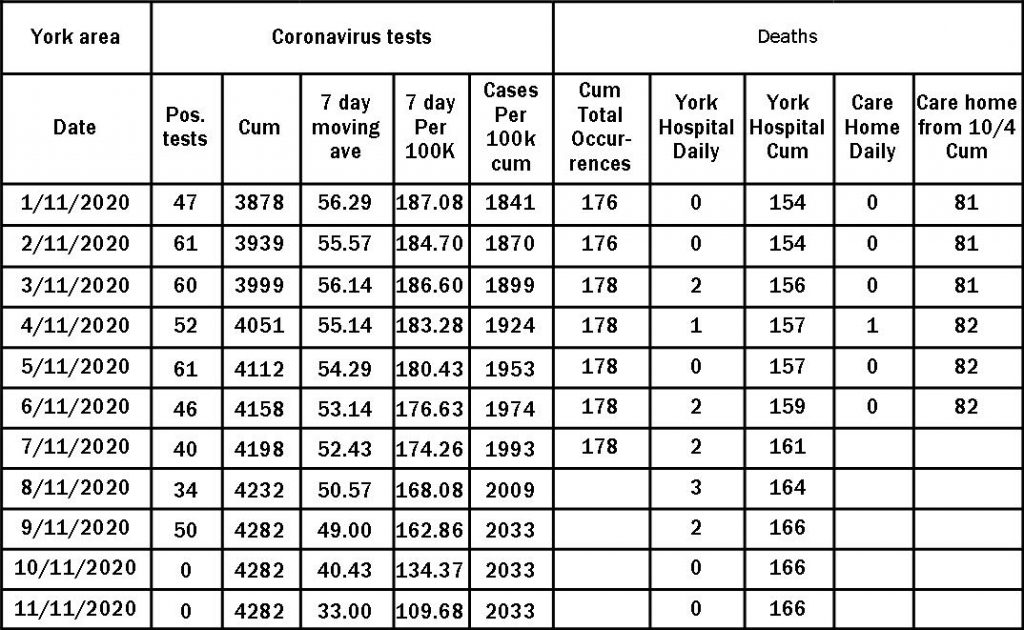
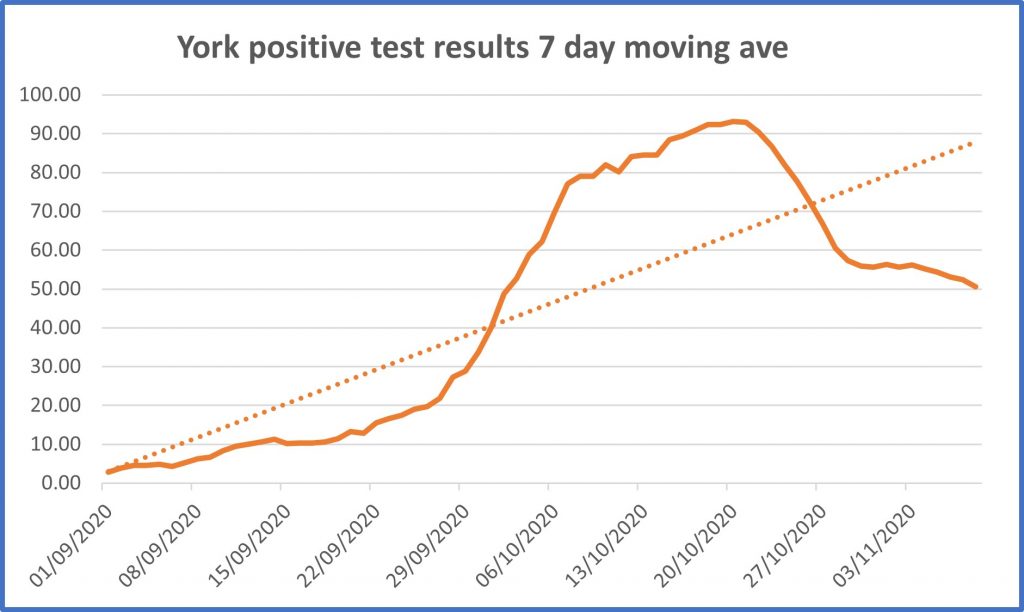

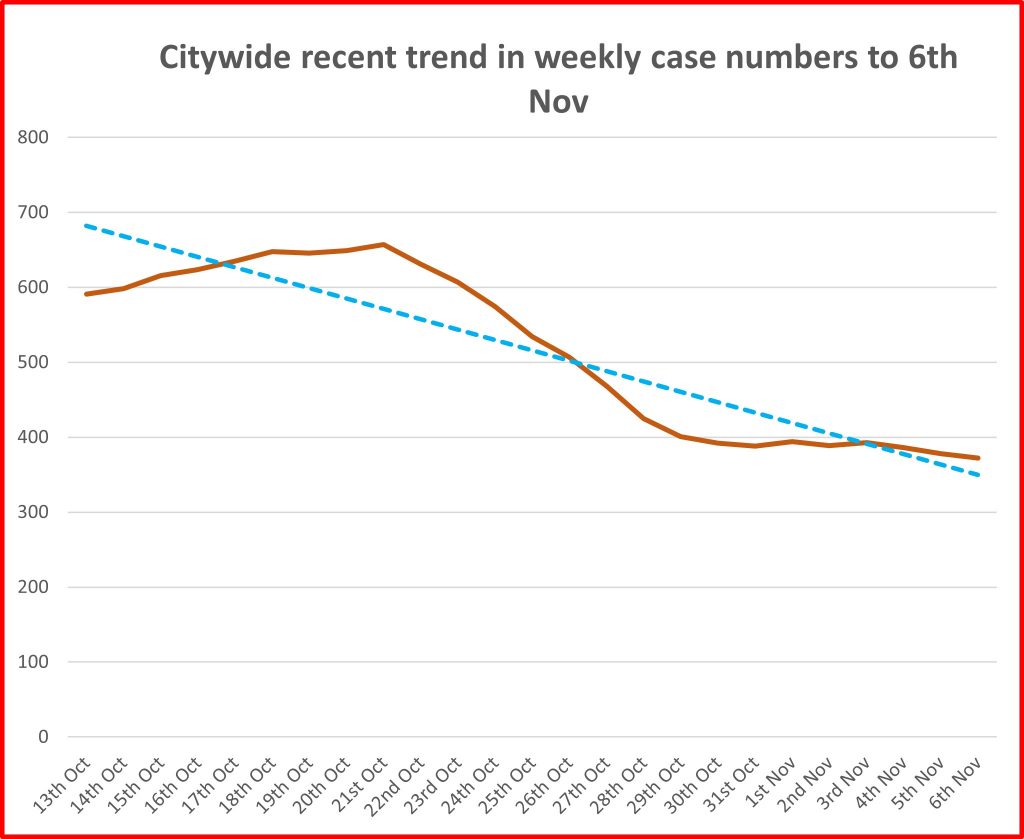
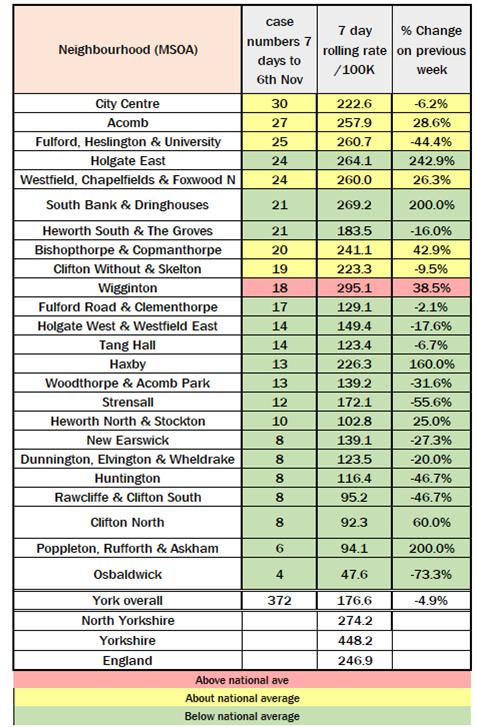
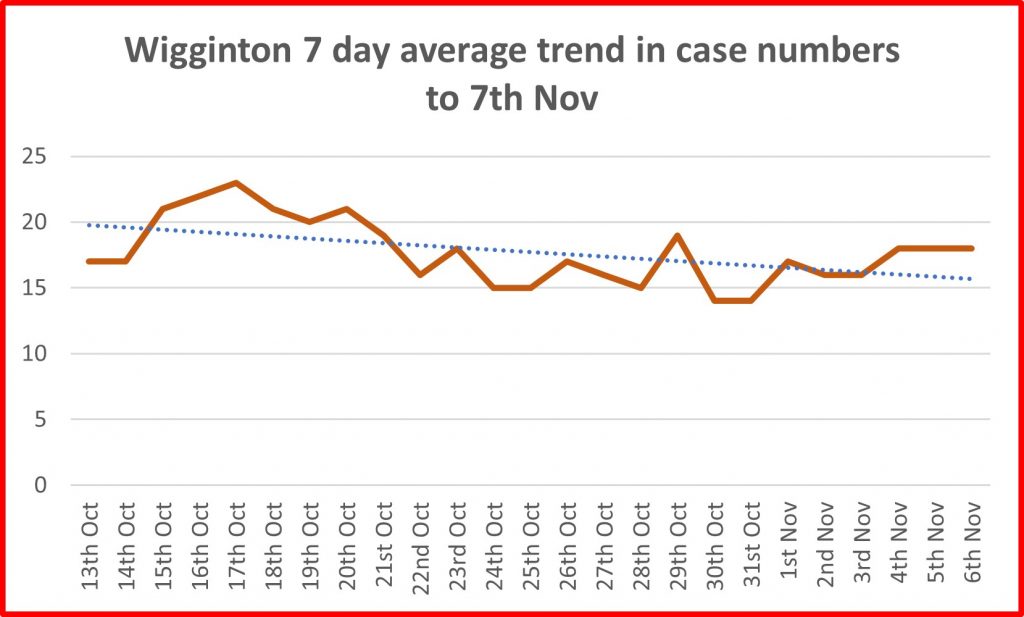
York now has one of the lowest infection rates in North Yorkshire. It is also much lower than other urban areas in Yorkshire. Hull now has the highest number of cases.
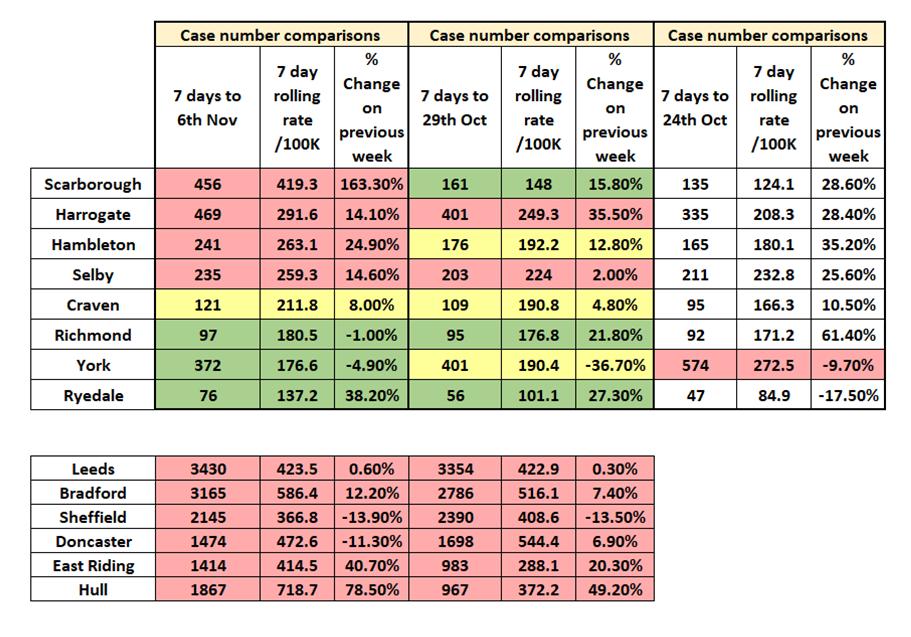
Centre for City’s view of York economy
The Centre for City’s group have updated their economic modelling work to reflect the latest impact of the lockdown. The figures suggest that York is faring about average when compared to other parts of the country.

Hospital pressures
More than 450 NHS workers in North Yorkshire are off sick or self-isolating because of coronavirus.
Amanda Bloor, accountable officer for North Yorkshire NHS Clinical Commissioning Group, told a briefing that the staff shortages are having a “significant impact” on hospitals already under pressure from a surge in virus patients.
The absences come as the region’s main hospitals in Harrogate, Scarborough, York and South Tees are treating almost as many coronavirus patients as the first wave after a 33% jump in admissions in the last week.
On Tuesday, 252 patients were receiving emergency treatment, compared with 302 in spring.
Mrs Bloor told a briefing of the North Yorkshire Local Resilience Forum: “We are seeing an increase in staff absences – there are 450 staff across the main North Yorkshire hospitals absent either with Covid or in self-isolation.
“Marrying that with the seasonal illnesses and absences that we would normally expect, it is having a significant impact on staffing levels.
“All of our trusts have got surge plans that allow them to respond to normal winter pressures but particularly where we are now with the increase in numbers of patients presenting with Covid symptoms.
“We have mutual aid agreements in place between hospitals so that they can support each and we can take a regional view.
“If the numbers do rise significantly that will mean that hospitals can not protect planned care capacity which they are working really hard to do.”
Harrogate Hospital currently has 28 coronavirus patients – an increase of 13 from last week.
York has 56 patients – after 15 were admitted in the last seven days.
South Tees – which is located in Middlesbrough but serves North Yorkshire residents – has the highest figure of 119 – an increase of 15.
It comes as NHS staff are reportedly to get twice-weekly home coronavirus tests as early as next week.
Professor Stephen Powis told the Health Service Journal that all patient-facing staff will receive asymptomatic testing, with tests to be rolled out across 34 hospital trusts and cover “over 250,000 staff”.
Universities
The media are reporting that students at York and St John Universities will be encouraged to return home in December. Travel dates will be staggered.
It is unclear whether those wishing to travel on public transport will be required to take one of the new “lateral flow” tests which have been used in a Liverpool pilot, with a turnaround time of under an hour and available for people without symptoms.
It is unlikely that the many foreign students currently studying at the University would be able to return home.
It remains unclear whether the Universities will reopen in January or whether “on line” study will become the new norm.
Back to Tier 1 says MP
Local MP Julian Sturdy has said that York should return to Tier 1 status on 3rd December when the current lockdown period is due to end.
There would be some serious issues to be addressed if the City were to encourage people from high infection areas to visit the City. The spike in September and October can be traced to contacts with people newly arrived in the City.
Now, with infection rates already back to those last seen in September, a strategy aimed at encouraging “locals” to use York shops maybe the safest way forward.
York currently has not yet taken up the offer from the government of “mass testing”.
